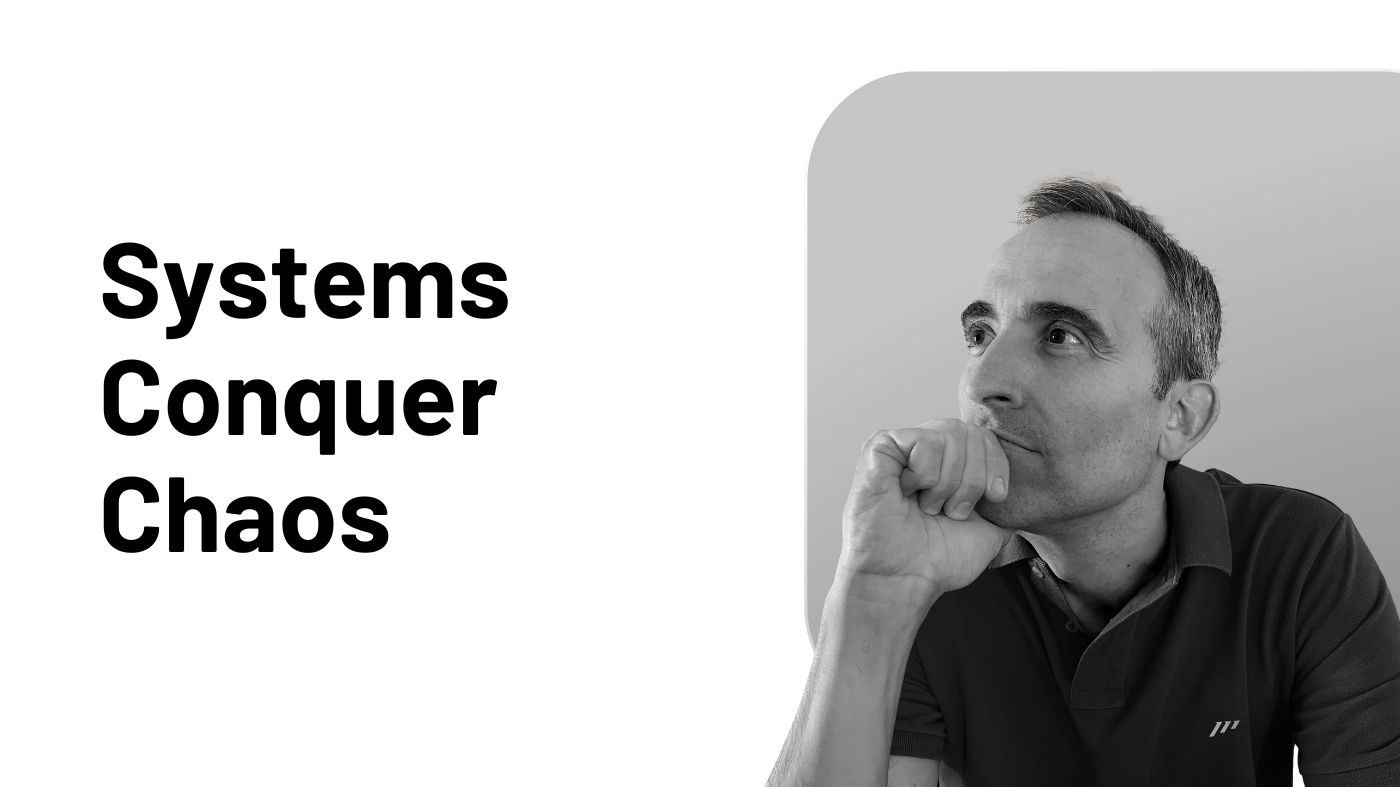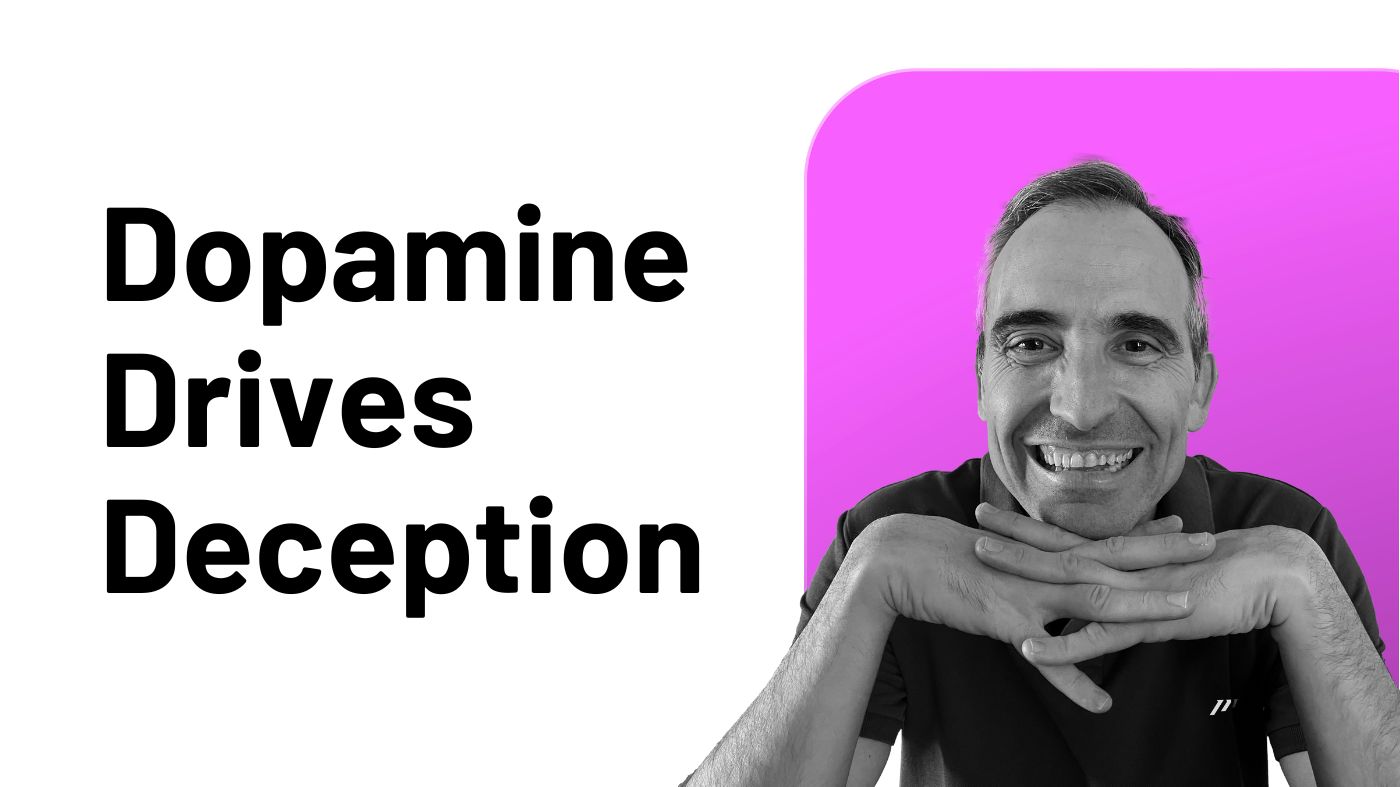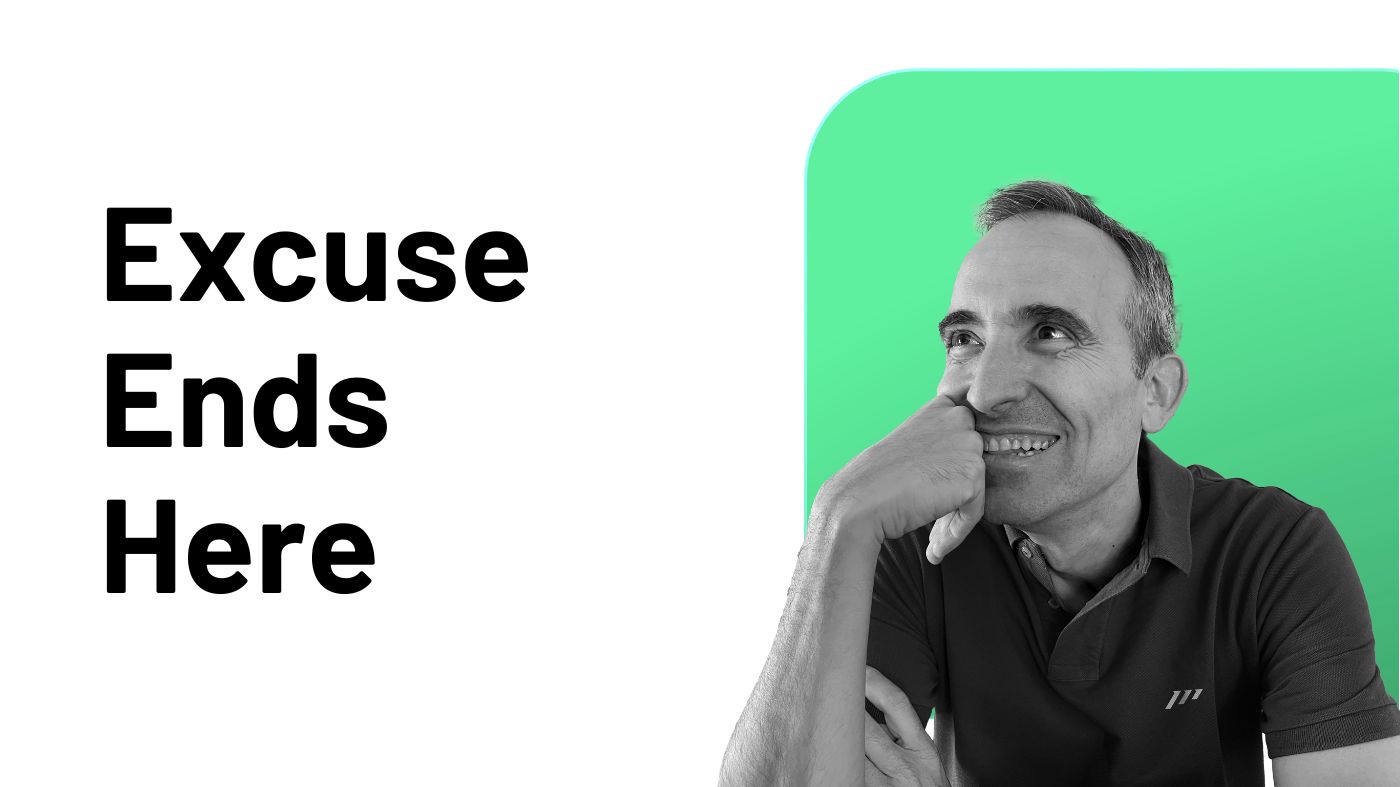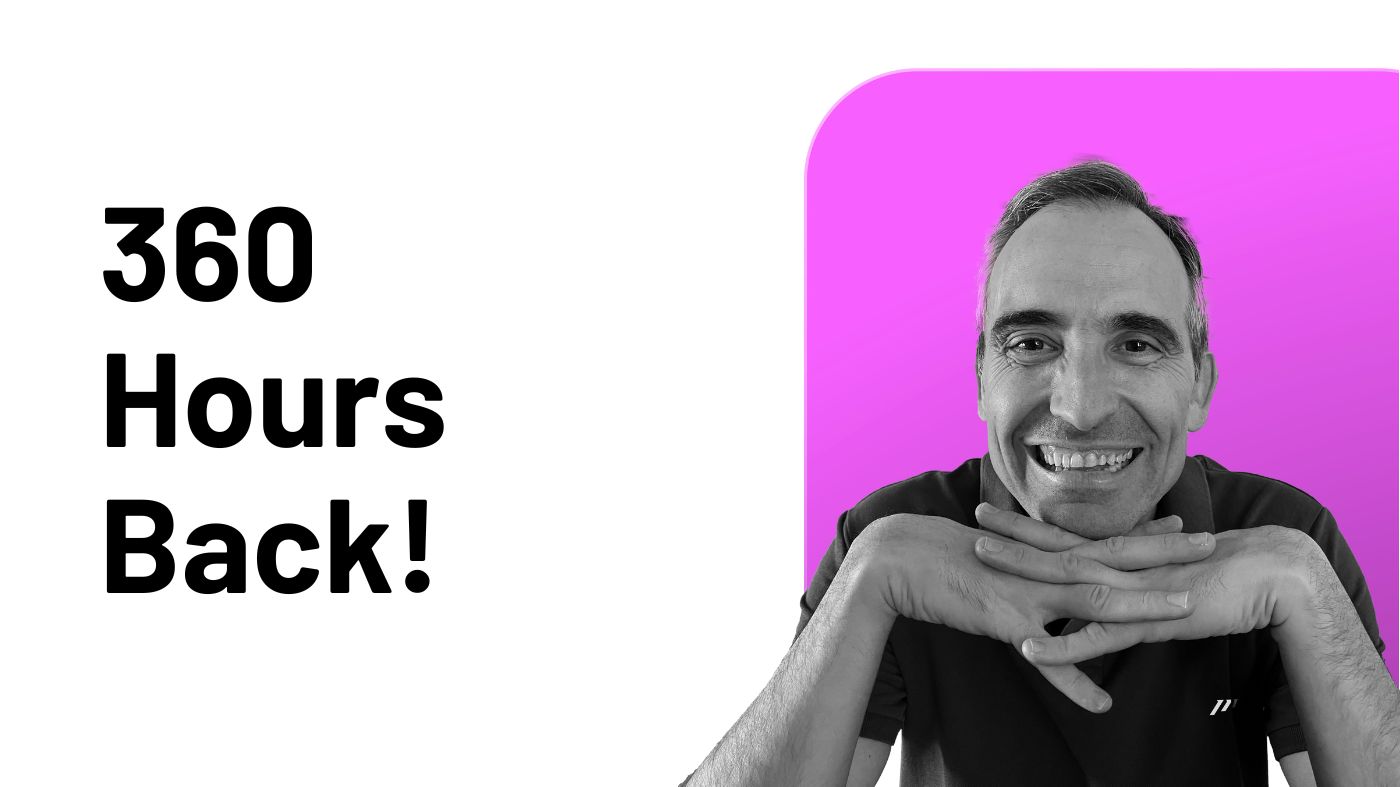This is a topic I’ve been thinking about a lot lately.
ADHD has definitely become a sort of “hype” in recent years. And while I don’t question the reality of it for many people, I do believe there’s always been individuals who are naturally proactive, energetic, and driven to do a lot at once.
The difference now? The world we live in (hyper-connected, constantly buzzing) is amplifying that tendency.
We’re being pushed to move faster, multitask more, and stay “on” all the time. It’s no wonder many of us feel scattered or mentally drained.
For me, the antidote isn’t to fight who we are. It’s to balance it. And that’s where having a solid productivity system makes all the difference.
I see mine as a partner.
It’s the clear-headed, objective part of me I can always lean on. It brings structure when my energy wants to run wild, and calm when the stress or emotional noise gets loud.
This is what we call the “one brain, two parts” concept. The physical me who’s reacting, doing, feeling. And the productivity system behind me, my digital twin, who holds the plan, the priorities, the path.
Together, they create focus, eliminate overwhelm, and bring peace of mind.
So yes, I get lost sometimes too. But I don’t stay lost. Because my productivity system brings me back.
When Your Brain and the Modern Workplace Collide
Let me share something I’ve noticed working with busy professionals over the years.
The modern workplace wasn’t designed for how many of our brains naturally work.
It’s like trying to fit a square peg into a round hole and then blaming the peg when it doesn’t fit perfectly.
“I succeed because I know what it’s like to feel out of control — and I built systems so I wouldn’t have to live there.” — Simone Biles, Olympic gymnast diagnosed with ADHD
Take Alex, a brilliant marketing director I worked with last year.
In meetings, his mind constantly made connections others didn’t see.
He’d generate creative solutions to problems the team hadn’t even recognized yet. But he also struggled to complete reports on time, forgot about scheduled calls, and felt perpetually behind despite working longer hours than anyone else.
“I know I’m smart,” he told me during our first session. “So why do I feel so… incompetent sometimes?”
The answer wasn’t that Alex was incompetent.
It’s that he was trying to manage a brain wired for creativity and connection using tools designed for linear, sequential thinking.
He was using sticky notes, forgotten calendar reminders, and sheer willpower to manage a complex executive role.
The traditional advice he received only made things worse:
-
“Just focus harder.”
-
“Make a to-do list.”
-
“Be more disciplined.”
This advice assumes the problem is effort or motivation.
But for many professionals with ADHD tendencies, the issue isn’t wanting to perform better. It’s that their internal executive function systems (the brain’s management system) works differently.
Your Brain’s CEO Needs a Co-Pilot
Think of executive function as your brain’s CEO.
In some brains, particularly those with ADHD tendencies, this CEO gets easily distracted, struggles with time perception, and has a filing system that would make any office manager quit on the spot.
The solution isn’t finding a new CEO (you’re stuck with your brain).
The solution is hiring a reliable co-pilot: a productivity system that complements your brain’s natural patterns.
“Discipline is remembering what you want. Systems help you remember even when your brain forgets.” — David Allen
Let me tell you about Maya, a software company founder whose brilliant vision was being undermined by missed deadlines and forgotten follow-ups with potential investors.
Her thoughts moved faster than she could capture them, and important details slipped through the cracks during crucial growth periods.
“I feel like I’m letting everyone down,” she admitted. “I have all these ideas but can’t seem to execute them consistently.”
We built Maya a productivity system that worked with her brain instead of against it. For her, this meant:
-
A digital capture tool she could speak ideas into while driving.
-
A visual project board that mapped concepts spatially rather than linearly.
-
A daily ritual that took just 15 minutes but created a bridge between her creative vision and practical execution.
Six months later, Maya’s company secured its second round of funding.
“The weird thing is,” she told me, “I don’t feel like I’m working harder. I’m just not fighting myself anymore.”
When Your Brain Plays Hide and Seek with Information
One of the most frustrating experiences for busy professionals with ADHD tendencies is the constant sense that important information is playing hide and seek in their own minds.
Carlos, a senior attorney, described it perfectly: “I know I read that case brief. I know the precedent exists. I can almost see the page in my mind. But can I find it when I need it? Of course not.”
This isn’t carelessness. It’s a working memory challenge.
“My brain has a Ferrari engine with bicycle brakes. Thank God I found tools that let me drive without crashing.” — Dr. Edward Hallowell, psychiatrist and ADHD expert
For many ADHD brains, information doesn’t get filed neatly away. It exists in associative webs that can be brilliant for creative connections but terrible for systematic retrieval.
A productivity system creates an external memory bank that doesn’t rely on your brain’s filing system. It becomes a second part of your brain, one that doesn’t lose important information or forget crucial deadlines.
For Carlos, we created a productivity system where:
-
Case notes were tagged by multiple categories, not just filed in folders.
-
Key findings were highlighted and summarized at the point of capture.
-
Regular review periods were scheduled to refresh familiarity with ongoing cases.
“For the first time in my career,” Carlos told me after three months, “I feel like I can trust my own work. I’m not constantly worried I’ve missed something crucial.”
From Time Blindness to Time Sight
“Where did the day go?” “How is it already Thursday?” “I thought this would take 30 minutes, and now it’s been three hours.”
Sound familiar?
Many professionals with ADHD tendencies experience what’s called time blindness, a genuine difficulty perceiving the passage of time accurately.
Jamie, a consultant who worked with us last year, initially blamed herself for this challenge. “I must be lazy or unmotivated. Everyone else seems to meet their deadlines without drama.”
But time blindness isn’t about character flaws. It’s about how your brain perceives time. Some brains simply don’t have an accurate internal clock.
The solution? External time structures that make the abstract concrete.
Jamie’s productivity system included:
-
Visual timers that showed time passing.
-
Calendar blocking with buffer time built in.
-
Task estimates that automatically multiplied her initial guess by 1.5.
-
Transition alerts that helped her shift between activities.
“I still don’t ‘feel’ time passing any differently,” Jamie reflected after implementing her productivity system. “But I don’t need to anymore. My productivity system keeps track for me, so I can focus on my work instead of watching the clock.”
Finding Control in the Chaos
Perhaps the greatest gift a productivity system offers is a sense of control in an increasingly chaotic world.
For professionals with ADHD tendencies, the world can sometimes feel like it’s coming at you from all directions at once.
Emails, Slack messages, phone calls, meetings, deadlines, family obligations.
The overwhelm is real and intense.
A well-designed productivity system creates boundaries and structure that transform chaos into order. Not through rigidity, but through clarity.
Rafael, a nonprofit director with significant ADHD challenges, described the transformation this way: “Before, I felt like I was constantly playing defense, just reacting to whatever crisis was loudest at the moment. Now I have a productivity system that helps me decide what actually deserves my attention. I’m playing offense again.”
His system provided:
-
Clear criteria for what constitutes a genuine emergency.
-
Designated times for responding to various types of communication.
-
Visual representations of his key priorities.
-
Simple decision frameworks for common scenarios.
“The most surprising benefit,” Rafael told me, “is how much calmer I feel. I’m getting more done, but I’m actually less stressed about work.”
Building Your Own Digital Co-Pilot
So how do you build a productivity system that works with your unique brain rather than against it?
Here are the key principles I’ve found most effective when working with busy professionals who have ADHD tendencies:
-
Start with capture, not organization. Many professionals get stuck trying to create the perfect organizational system. But if information never makes it into your productivity system reliably, the most elegant organization is useless. Begin by making it ridiculously easy to capture thoughts, ideas, and commitments in the moment.
-
Separate information from action. One of the biggest system failures happens when reference information gets mixed with actionable commitments. These need different handling. Reference materials need good search and retrieval. Actions need visibility and triggers. This is what our methodology, ICOR®, facilitates and makes it happen.
-
Create external reminders. Don’t rely on your brain to remember important deadlines or commitments. Build a system of alerts, visual cues, and reminders that exist outside your head.
-
Build in regular maintenance. Even the best productivity system needs regular attention. Schedule short, consistent times to review and refresh your system before it breaks down.
Design for your actual life, not your ideal life.
“The problem isn’t how your brain works. It’s expecting it to function without a co-pilot.” — Brené Brown
The perfect productivity system that you never actually use is worse than a simple productivity system you use consistently.
Start where you are and build gradually.
Learn from failure, don’t punish it.
When your productivity system breaks down (and it will occasionally), treat it as data, not disaster.
What specific element failed? How can you strengthen that component?
Your Brain, Your System, Your Success
The journey to building your ideal productivity system takes time, experimentation, and patience. But the investment pays extraordinary dividends, not just in what you accomplish, but in how you feel along the way.
For busy professionals with ADHD tendencies, a good productivity system isn’t just about getting more done. It’s about reclaiming a sense of capability and confidence that might have been undermined by years of trying to work in ways that fight against your brain’s natural patterns.
Remember, your brain gives you unique capabilities. Paired with the right productivity system, there’s no limit to what you can achieve.




